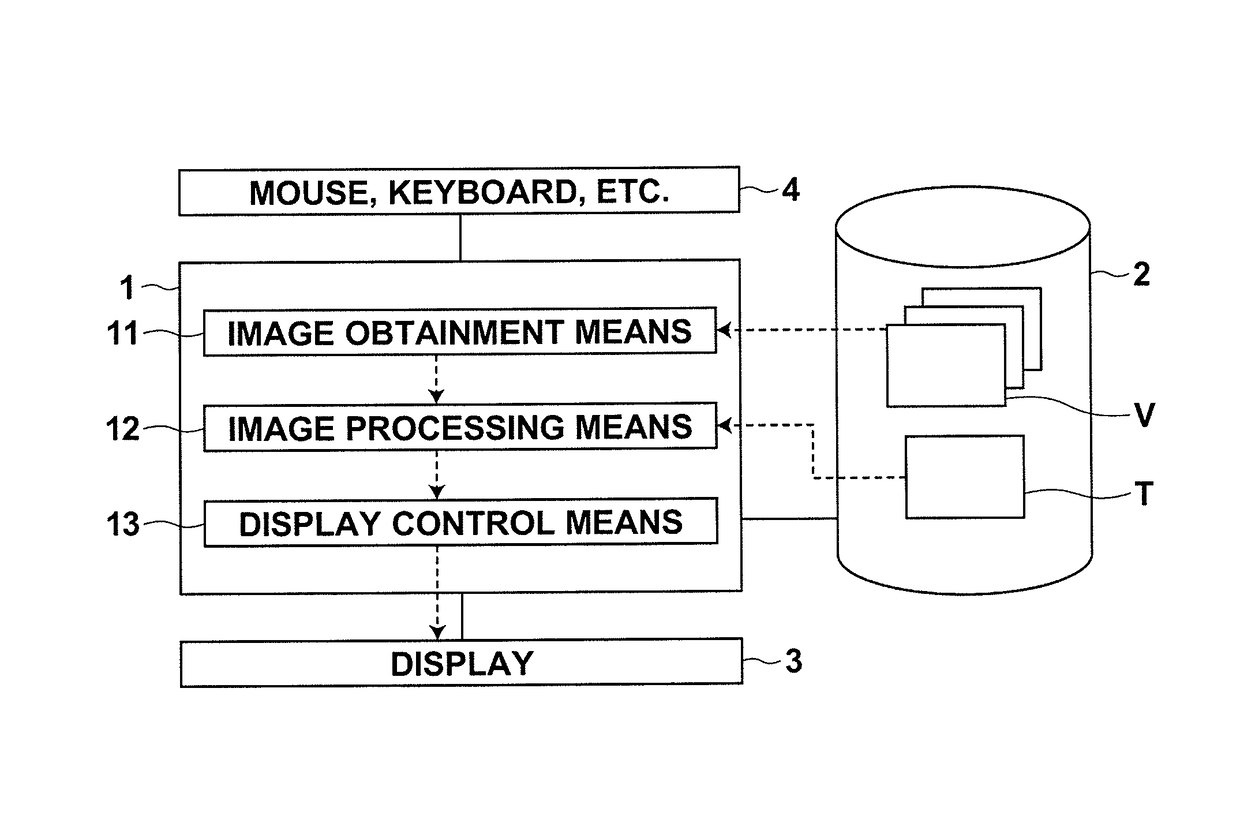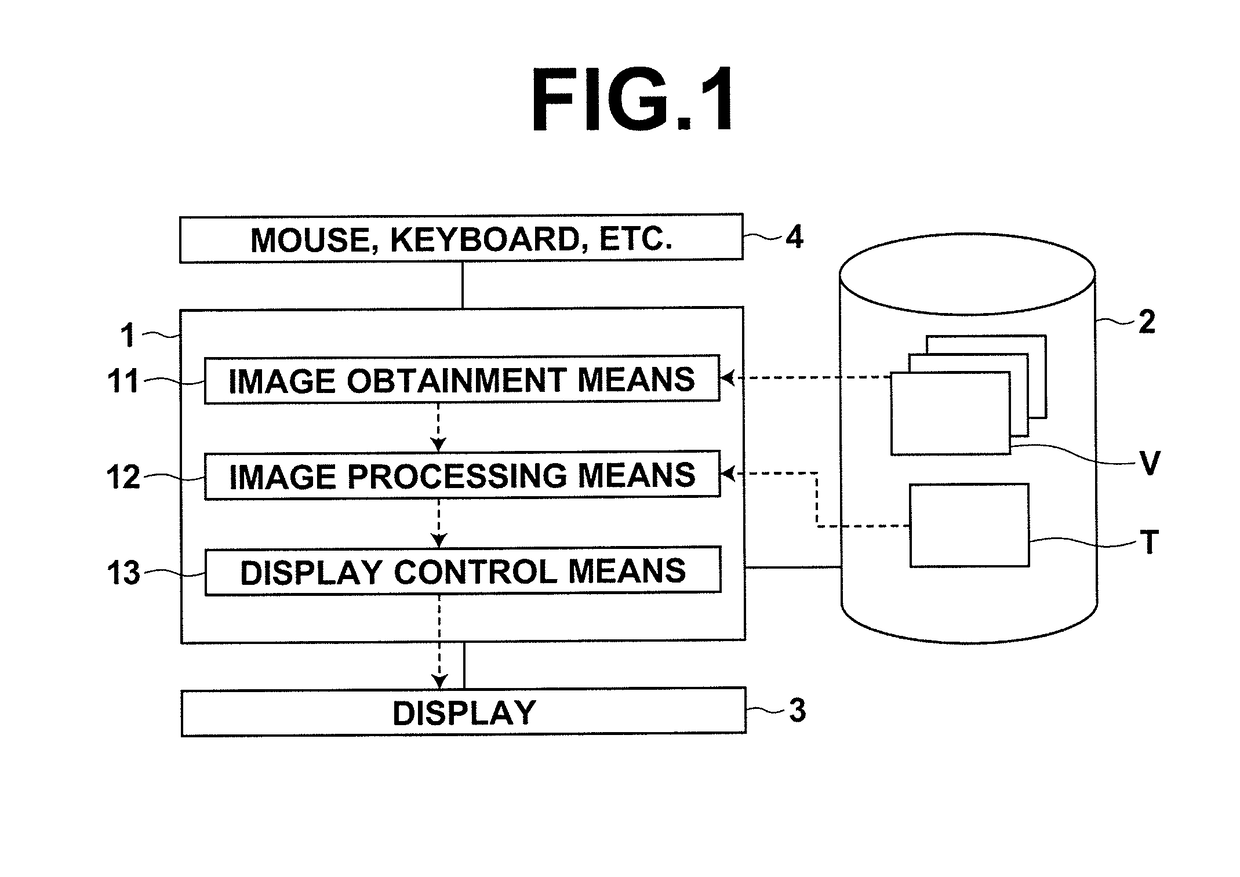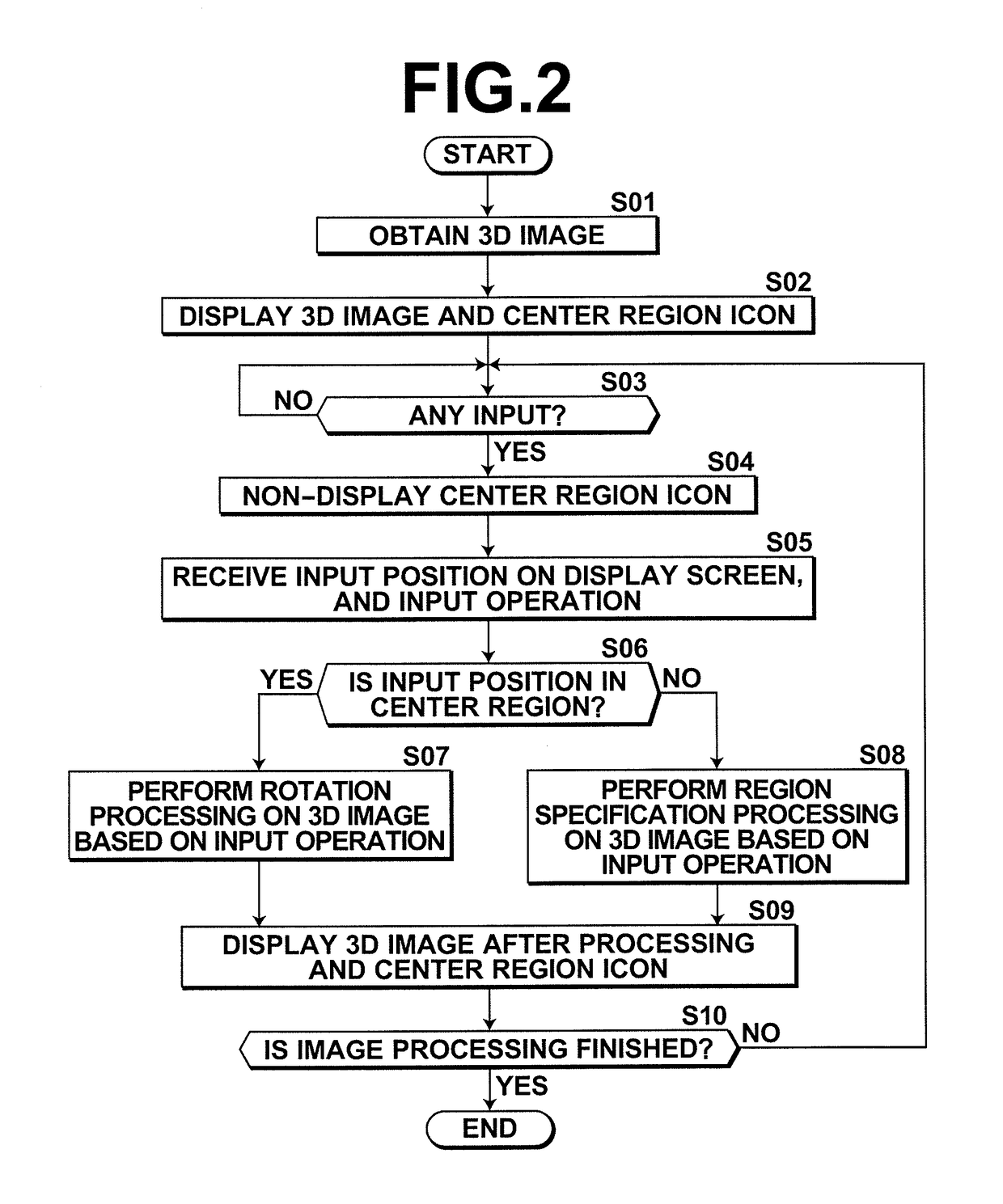Image processing apparatus, method and program
a technology of image processing and apparatus, applied in the field of image processing techniques, can solve the problems of difficult use of methods, inexperienced users, and inability to meet user demands, and achieve the effect of simple operation and easy understanding
- Summary
- Abstract
- Description
- Claims
- Application Information
AI Technical Summary
Benefits of technology
Problems solved by technology
Method used
Image
Examples
Embodiment Construction
[0054]Hereinafter, an image processing apparatus, an image processing program and an image processing method according to embodiments of the present invention will be described in detail with reference to drawings. This invention is applicable to various fields in which a desired region is extracted by sequentially deleting an unneeded region in a three-dimensional image displayed on an image display apparatus while a desired image is rotated. Here, the present invention will be described by using a case of applying the present invention to diagnostic imaging in medical fields.
[0055]FIG. 1 is a schematic diagram illustrating the configuration of an image processing apparatus realized by installing an image display program in a workstation used by doctors. An image processing apparatus 1 includes, as a standard workstation configuration, a processor and a memory (which are not illustrated). Further, the image processing apparatus 1 includes a storage 2, such as HDD (Hard Disk Drive) ...
PUM
 Login to View More
Login to View More Abstract
Description
Claims
Application Information
 Login to View More
Login to View More - R&D
- Intellectual Property
- Life Sciences
- Materials
- Tech Scout
- Unparalleled Data Quality
- Higher Quality Content
- 60% Fewer Hallucinations
Browse by: Latest US Patents, China's latest patents, Technical Efficacy Thesaurus, Application Domain, Technology Topic, Popular Technical Reports.
© 2025 PatSnap. All rights reserved.Legal|Privacy policy|Modern Slavery Act Transparency Statement|Sitemap|About US| Contact US: help@patsnap.com



